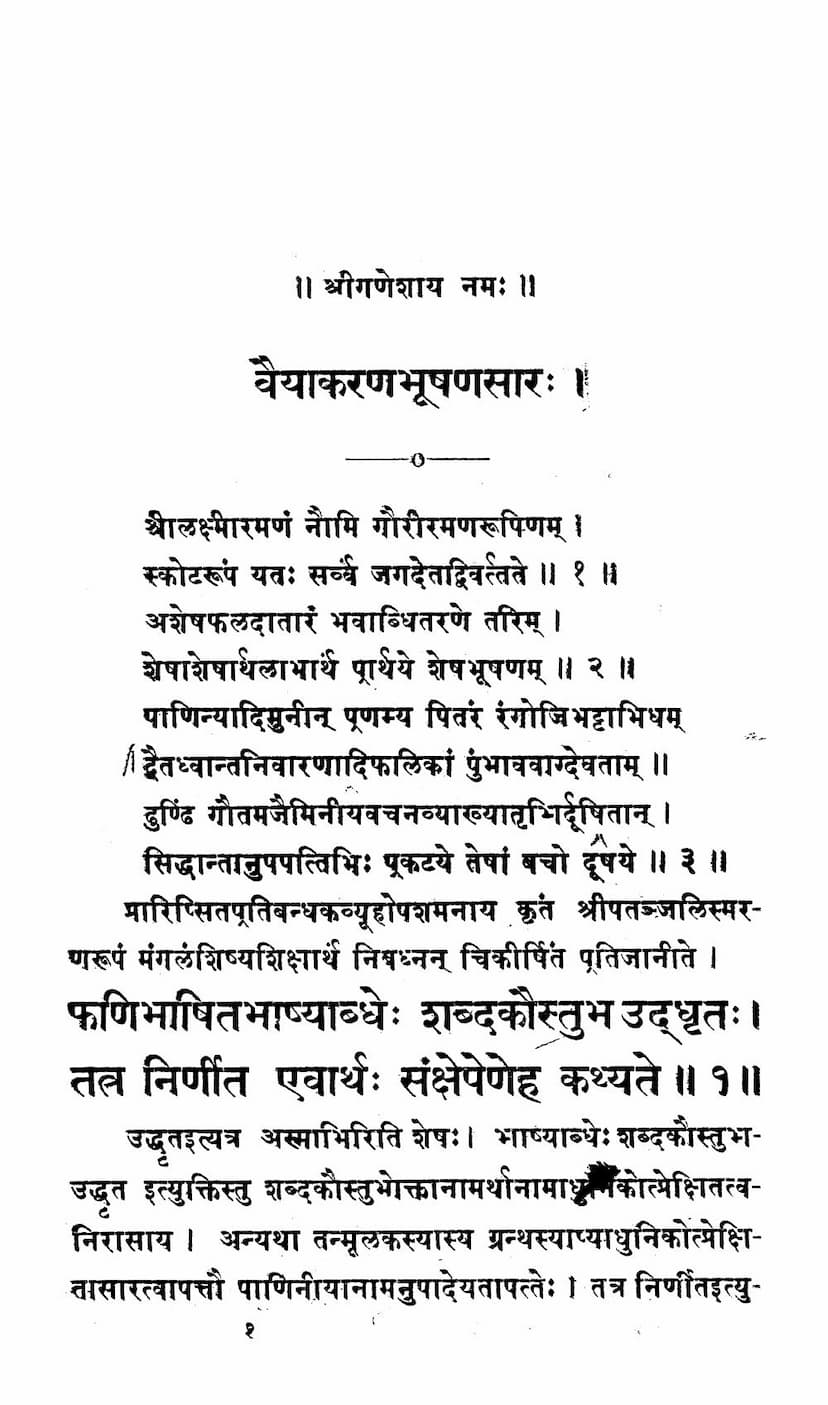Vaiayakaran Bhushansara
Added to library: September 2, 2025

Summary
Here's a comprehensive summary of the provided Jain text, "Vaiayakaran Bhushansara," based on the pages you've shared, focusing on the grammatical concepts discussed:
The text, "Vaiayakaran Bhushansara," is a treatise on Jain grammar, aiming to explain the intricacies of Sanskrit grammar as understood within the Jain tradition. While the author and publisher are unknown, the text itself delves into various aspects of linguistic analysis, particularly focusing on the meaning and function of roots (dhatu), verbal endings (tin), and case endings (su).
Key Grammatical Concepts Explained:
-
Nature of Roots (Dhatu):
- Roots are understood to primarily denote action or activity (vyapara). This action is often described as the cause or the primary element in the formation of words.
- The text clarifies that the fruit (phala) of the action is also an essential component, often seen as the result or goal of the root's activity.
- The relationship between the root, action, and fruit is crucial for understanding the meaning of verbs.
-
Function of Verbal Endings (Tin):
- "Tin" endings are primarily associated with actions and their auxiliaries.
- They are described as specifying agency (kartri), objectivity (karma), number (sankhya), and tense (kala) in relation to the root's meaning.
- The text engages with the debate on whether the tin endings or the root itself holds primary meaning. It asserts that the action/activity (bhava or vyapara) is the primary element conveyed by the tin endings, while the root specifies the nature of that action.
- The text critically examines different philosophical schools (like Mimamsa) and their interpretations of verbal endings, defending its own stance.
-
The Concept of "Bhava" (Action/State):
- Bhava is a central concept, referring to the action or activity itself. It is closely linked to the notion of vyapara.
- The text establishes that bhava is the primary meaning conveyed by the verbal endings, and the root clarifies the specific type of action.
- It delves into the relationship between bhava, phala (fruit), and vyapara (action), defining bhava as the action that is to be accomplished or is in the process of accomplishment.
-
The Role of Case Endings (Su):
- The text discusses the meaning of various case endings (e.g., dvitiya, tritiya, saptami, panchami, chaturthi, shashthi).
- Each case ending is linked to a specific grammatical relationship or function, such as:
- Dvitiya (Accusative): Denotes the object of an action, often related to the fruit or goal of the action, or the locus of action.
- Tritiya (Instrumental): Denotes the instrument or agent through which an action is performed.
- Saptami (Locative): Denotes the location or basis of an action.
- Panchami (Ablative): Denotes separation or origin.
- Chaturthi (Dative): Denotes the recipient or object of an intention.
- Shashthi (Genitive): Denotes relation or possession.
- The text often explains the nuances of these cases, particularly in relation to different verbs and their semantic scope.
-
Distinction between "Sakamaka" (Transitive) and "Akamaka" (Intransitive) Verbs:
- The text analyzes what makes a verb transitive or intransitive, often linking it to whether the verb denotes an action that inherently requires or affects an object beyond the immediate action itself.
-
Analysis of Tenses and Moods (Lakaara):
- The text briefly touches upon the meanings of different tenses and moods (e.g., Lat, Lit, Lut, Lot, Lin, Lung), associating them with temporal aspects (present, past, future) and intentionality (imperative, optative, etc.).
-
Theories of Meaning (Sphota):
- A significant portion of the text is dedicated to discussing and refuting different theories of meaning, particularly the concept of Sphota.
- It seems to favor a view where the meaning is derived from the combination of parts (words, roots, suffixes) rather than an indivisible, inherent "sound-idea" (sphota).
- The text engages in a debate about whether sounds, syllables, words, or the entire sentence are the ultimate carriers of meaning, often leaning towards an analysis of constituent parts.
Methodology and Argumentation:
- Logical Reasoning and Examples: The author employs logical reasoning, quoting scriptural verses (like those from Panini's Ashtadhyayi) and other grammatical works (like the Mahabhashya and Vakyapadiya) to support their arguments. Concrete examples from Sanskrit usage are frequently used to illustrate grammatical principles.
- Critique of Other Schools: The text actively engages with and critiques the views of other grammatical schools, particularly the Mimamsakas and some Naiyayikas, highlighting perceived inconsistencies or weaknesses in their interpretations.
- Emphasis on "Laghava" (Simplicity/Parsimony): The author often argues for interpretations that lead to greater simplicity in grammatical rules and less reliance on abstract or complex concepts.
In essence, "Vaiayakaran Bhushansara" is a rigorous grammatical commentary that aims to provide a coherent and logical framework for understanding Sanskrit grammar, emphasizing the interconnectedness of roots, suffixes, case endings, and the resulting meaning within the context of Jain thought. The text is highly technical, engaging with complex linguistic and philosophical debates within Indian grammatical traditions.